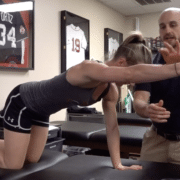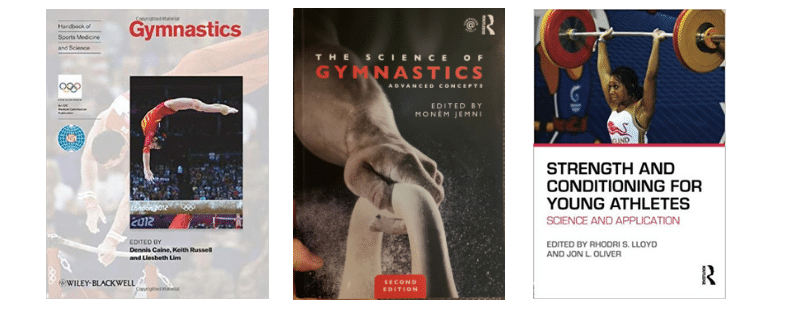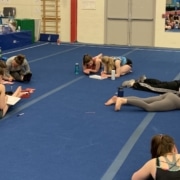The Five Pillars of Gymnastics Culture Change: Pathways to Happiness, Satisfaction, and Peak Performance
Toxic gymnastics cultures, when left unchecked, erode everyone inside making a massive negative impact on their health and performance while healthy gymnastics cultures, when nourished, elevate everyone to their highest levels of enjoyment in the sport. For those working in the sport, whether as coaches, athletes, parents, or medical staff, the atmosphere, and underlying cultural framework, are the bedrock in which everything else is built.
In this blog, I wanted to unpack what I feel are the five pillars of gymnastics culture change, and explore how they not only influence the sport’s progress but also the happiness and satisfaction of those involved.
Before we dive in, I wanted to let you know that today is the official launch of my brand new book, The Gymnastics Culture Cure: A Step-by-Step Workbook to Improve Happiness and Performance in Gymnastics which you can pick up here at 50% off during launch week.
I have spent 10 years and thousands of hours consulting or talking with the world’s best club, NCAA, and elite gymnastics programs working as the CEO of SHIFT. I have also spent 15 years coaching in various gym clubs across all levels. I have seen, and been a part of, examples of incredible and not-so-incredible gymnastics cultures. In this new book, I break down the exact tools, tips, and exercises that people working in gymnastics can use to be happier day to day and actually move the needle on building an amazing culture at their gym.
It’s 90+ pages across 5 Chapters, full of 25 hands exercises to help readers truly learn how to enjoy the sport more. Also, as a special launch week bonus, if you purchase a copy you will get free access to a live Gymnastics Culture Q&A with myself and Eva Shute. You will also get free access to a private Gymnastics Culture lecture that I use when consulting with NCAA and elite teams. Remember, these bonuses and the 50% off is only available this week, so don’t miss out!
That said, lets dive into the 5 pillars of Gymnastics Culture Change.
Table of Contents
1. Discovering Yourself
The pursuit of self-awareness is the cornerstone of anything meaningful, and gymnastics is no exception. For anyone involved in the sport, it’s essential to understand your motivations. Why did you choose gymnastics? What drives you every day? Recognizing these answers provides a clear vision, fueling daily motivation levels and purpose. Along with this, better understanding yourself allows you to know what produces stress or moments of frustration. Gymnastics brings frustration, challenges, tough emotions, highs, lows, and all the in-betweens. In order to navigate sometimes choppy waters as a coach, parent, gymnast, or medical provider, you must take time to reflect on what makes you tick and if you are managing that stress in a healthy way.
2. Changing Yourself First
A transformed gymnastics culture starts with transformed individuals. Before seeking to change others, you have to spend time truly working to make changes in your own life. Taking time to understand your fears, insecurities, motivations, and reasons for working in gymnastics is crucial. Then, if there are things you wish to change you must act on them by changing your daily habits. This allows you to bring your best self to the gym, and not only be happier but make the most impact on those around you. It also sets the stage to lead by example that although hard, the work of personal development is worth it. By clearly outlining your core values and priorities, it becomes easier to navigate the demanding world of gymnastics with joy and satisfaction.
3. Gym Culture Foundations
With a solid base of personal development in place, the next step is to sculpt the broader gym environment. Trust is the bedrock of any successful team or organization. Building trust with athletes means being transparent, and reliable, and showing genuine concern for their welfare. Effective communication is paramount – it ensures everyone is on the same page, minimizes misunderstandings, and fosters a sense of unity. Lastly, clear cultural guidelines give everyone a roadmap. When everyone knows what’s expected, it reduces friction, elevates performance, and ensures a harmonious coexistence, making daily engagements more gratifying. The best programs I’ve had the pleasure of consulting with have this social ‘glue’ as a base for their performance goals.
4. Athlete Foundations
At the end of the day, without gymnasts, the sport itself doesn’t continue to progress. So our main focus should be prioritizing a gymnast’s mental, physical, and emotional health at all times. Beyond this, the ability to teach proper skill basics and technical foundations helps to set the stage for safea and meaningful progress within the sport. Healthy gym cultures create enviroments where training can be challenging, yet safe, in the pursuit of meaningful goals the athletes have. Aligning these goals and communicating them effectively ensures everyone works toward the same vision. When these three dimensions are in sync, it reduces injuries, and burnout, and ensures that athletes can perform at their peak, leading to a fulfilling and rewarding experience for all involved.
5. It Takes A Village
A gym’s culture is a collective endeavor. The right coaching staff is essential – individuals who are accountable, who embody the gym’s cultural guidelines, and who treat each other with respect. If a coach is misaligned with these values, it may be best for them to seek opportunities elsewhere. A gym’s culture isn’t just shaped by its staff but also by parents. They are not adversaries but allies. By keeping them informed and partnering with them, the gym ensures the holistic growth of gymnasts. Furthermore, medical providers play a pivotal role. Their expertise in proactive care and performance optimization ensures that athletes remain in prime condition, both physically and mentally.
Conclusion
In my collective 30 years in gymnastics, I can confidently say that the components above exist in the gymnastics cultures I see that are full of healthy, happy, high-performing people. This means not only the gymnasts, but also the coaches, parents, medical staff, and support staff. It is very hard, and takes daily work, to improve a gym’s culture and maintain it. But, I can tell you it is fully worth all the effort. And remember, if this blog was helpful and you want to know my exact thoughts on being happier working in the sport, be sure to check out my brand new book The Gymnastics Culture Cure which is now available and 50% off this week!
Hope this was helpful,
– Dave
Dr. Dave Tilley DPT, SCS
CEO/Founder of SHIFT









